This small vanilla cake recipe is mini but mighty! It's made with two round 6 inch cake layers that are tender, moist, and full of vanilla flavor. Frosted with sweet cream cheese frosting, it's a perfect cake for any celebration!
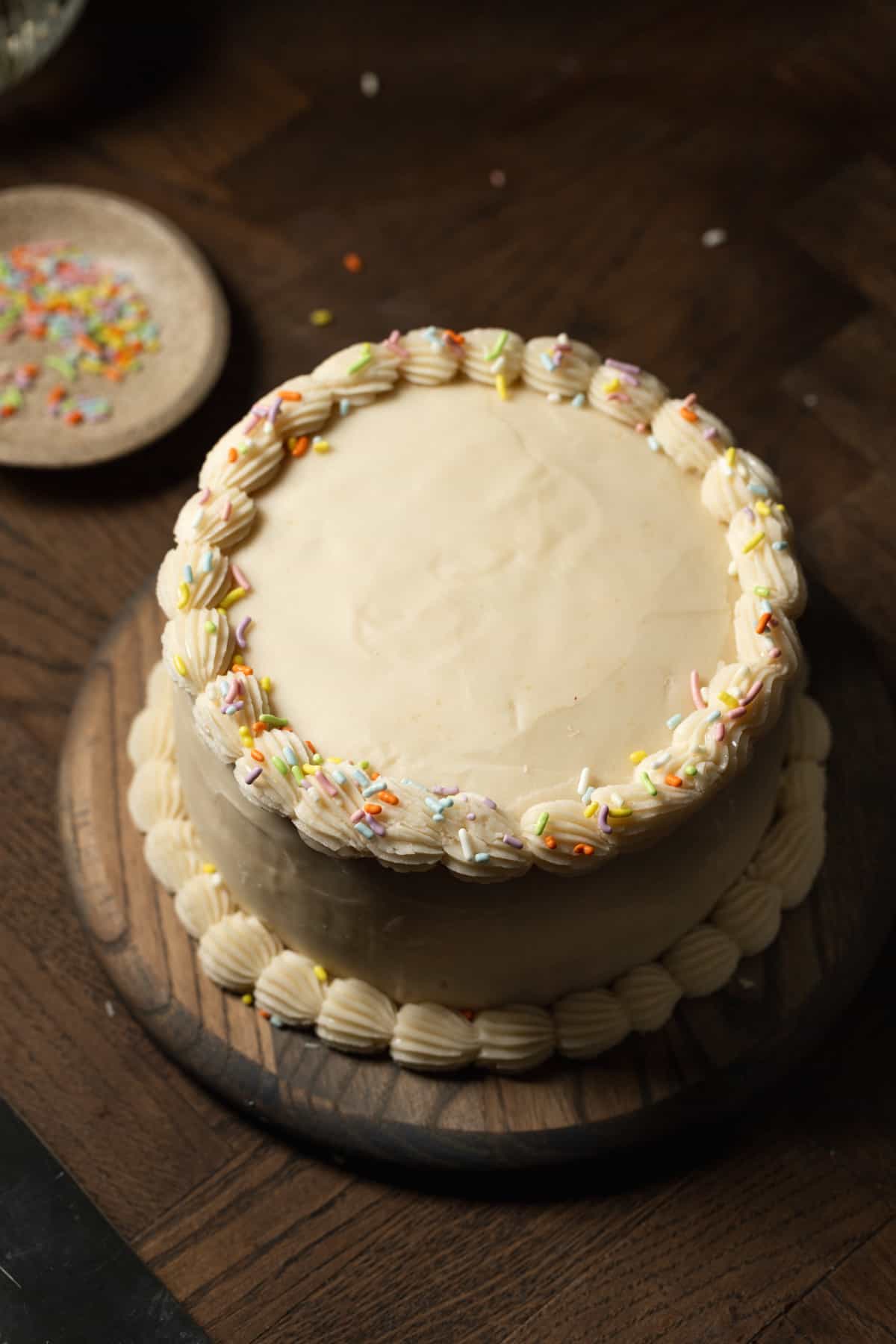
This small vanilla cake is the best simple cake! It may be little, but it doesn't lack in the flavor and texture departments. It is soft, fluffy, and has a delicious, sweet vanilla flavor. There's a luscious, homemade cream cheese frosting in between the 6-inch cake layers and smothered all over the tops and sides of the cake. You'll have no choice but to go back in for a second slice!
Topped with rainbow sprinkles, this makes a great mini birthday cake! Even if you don't have a birthday coming up, you can serve it at all sorts of occasions, like anniversaries, date nights, bridal showers, or other small celebrations. Or you can just get a little wild and make a cake for yourself on a Friday night; nothing wrong with that!
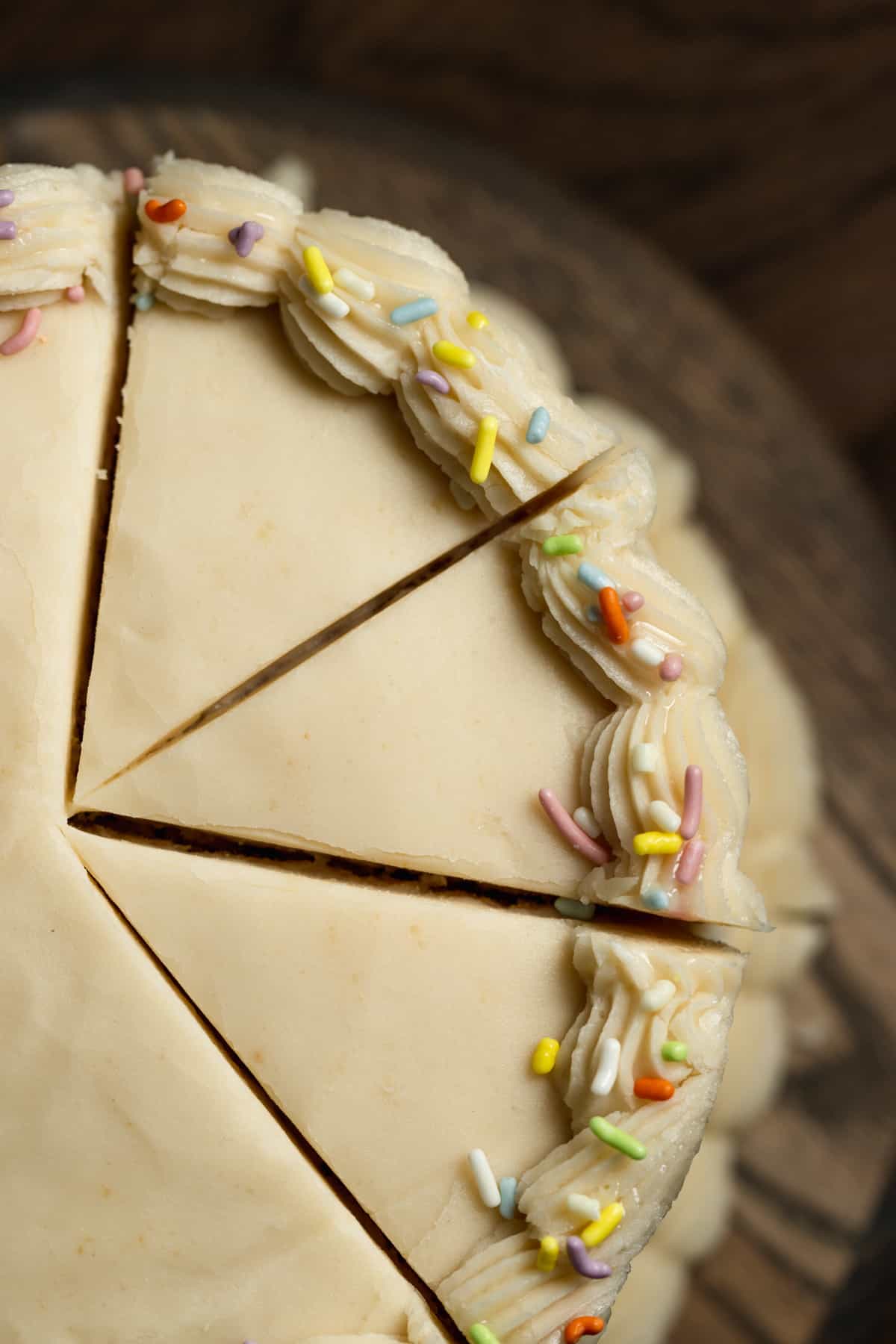
If you love small cake recipes, you should check out my other small batch bakes! I highly recommend trying my lemon berry mascarpone cake, mini flourless chocolate cake, mini carrot cake, small batch blueberry muffins, strawberry vanilla cake, and small batch vanilla cupcakes.
Jump to:
Ingredient Notes
Here are some notes about the ingredients used. For quantities and full instructions, see the recipe card below.

- Cake flour- This light and fluffy flour has less protein and gluten than all purpose flour, giving the cake a tight, soft, tender crumb! Cake flour is essential for the texture, so you can't use all purpose flour. You can, however, make your own cake flour substitute!
- Granulated sugar- White sugar adds the perfect amount of sweetness and lets the vanilla flavor shine. Cane sugar works as a substitute.
- Baking powder- This helps the cake rise by adding air bubbles. Make sure it's less than 6 months old as it loses power over time.
- Baking soda- This leavener interacts with the acid in buttermilk to release gases and make the cake rise. Make sure it's fresh and be careful not to mix up the baking powder and baking soda quantities!
- Sea salt- Finely ground salt activates the baking powder and contrasts the sweetness.
- Unsalted butter- Butter adds a rich flavor and helps cake get light and fluffy. Make sure it's room temperature to mix in easily. Room temperature butter will be cool to the touch and easy to indent applying gentle pressure with your finger. It should look smooth, not greasy.
- Oil- Vegetable oil adds more fat, making the cake incredibly moist. Paired with butter, you can't taste it at all!
- Egg + egg white- One large egg binds the ingredients together and adds extra fat and moisture. The egg white adds a little more airiness and lift! Make sure the eggs are at room temperature so they blend into the batter evenly. Pull them out of the refrigerator about an hour before baking.
- Vanilla extract- Use pure vanilla extract for the best flavor, not imitation or artificial vanilla since it's the main flavoring of the cake.
- Buttermilk- This adds additional tang and helps to tenderize the gluten, giving the cake an even softer texture. It's the secret ingredient! Pull it out of the refrigerator the same time as the eggs and butter.
Substitutions
- Unsalted butter: You can use salted butter if it's all you have on hand, just omit the extra salt in the recipe.
- Oil: Any mild oil works in this recipe. You can use vegetable, avocado, grapeseed, or canola oil.
- Sea salt: Fine Kosher or pink Himalayan salt can be substituted. Add an additional ⅛ teaspoon if your salt isn't finely ground.
- Buttermilk: Plain kefir, plain Greek yogurt, or sour cream can be substituted at a 1:1 ratio. If you don't have buttermilk on hand, you can make your own! Combine ¼ cup whole milk with ¾ teaspoon vinegar or lemon juice. Mix, let it sit for 10 minutes to curdle, and you're good to go.
Helpful Equipment and Tools
- 6-inch round cake pans. Use metal pans, not glass or silicone. Glass pans don't heat up evenly and your cake will burn in a silicone pan. I highly recommend using non-stick pans. If yours aren't non-stick, remember to spray them with baking spray before lining with parchment rounds.
- 5-quart stand mixer fitted with the paddle attachment.
- For decorating, I recommend using an offset spatula. A bench scraper is optional, but it's a super helpful tool to smooth everything out!
- It's totally optional, but if you want to get professional with your cake decorating, use a revolving cake decorating stand with a non-slip pad.
Step by Step Instructions
Here is how to make a small cake from scratch! Before you start baking, preheat the oven to 350°F/180°C. Grease two 6-inch round pans with non-stick baking spray and line them with parchment rounds.
STEP 1: First, add the cake flour, sugar, baking powder, baking soda, and salt to the bowl of a 5-quart stand mixer fitted with the paddle attachment. Give the ingredients a mix on low, spinning about 5 times.
STEP 2: Add the softened butter to the mixing bowl and beat on low until no clumps are left and the texture looks like wet sand. This will take about 5 minutes.
Beating butter into the dry ingredients instead of creaming it with sugar alone is called the reverse creaming method and is key for a tender texture and less doming.
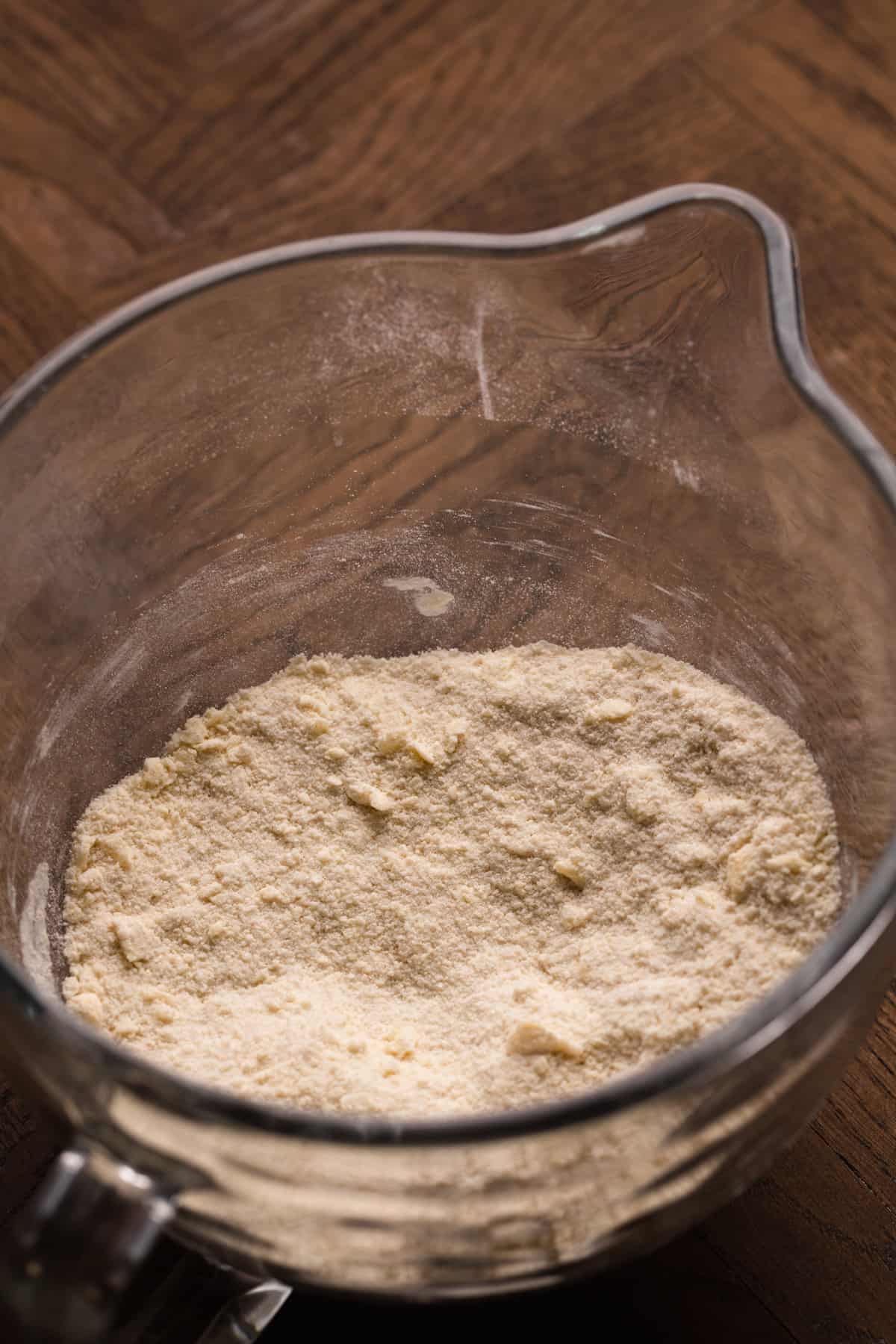
STEP 3: Turn the mixer off and add the oil, egg, egg white, and vanilla extract. Mix on low until a batter begins to form.
STEP 4: With the mixer running on low, slowly pour in the buttermilk. Continue mixing until the batter is smooth with no lumps or pools of liquid.
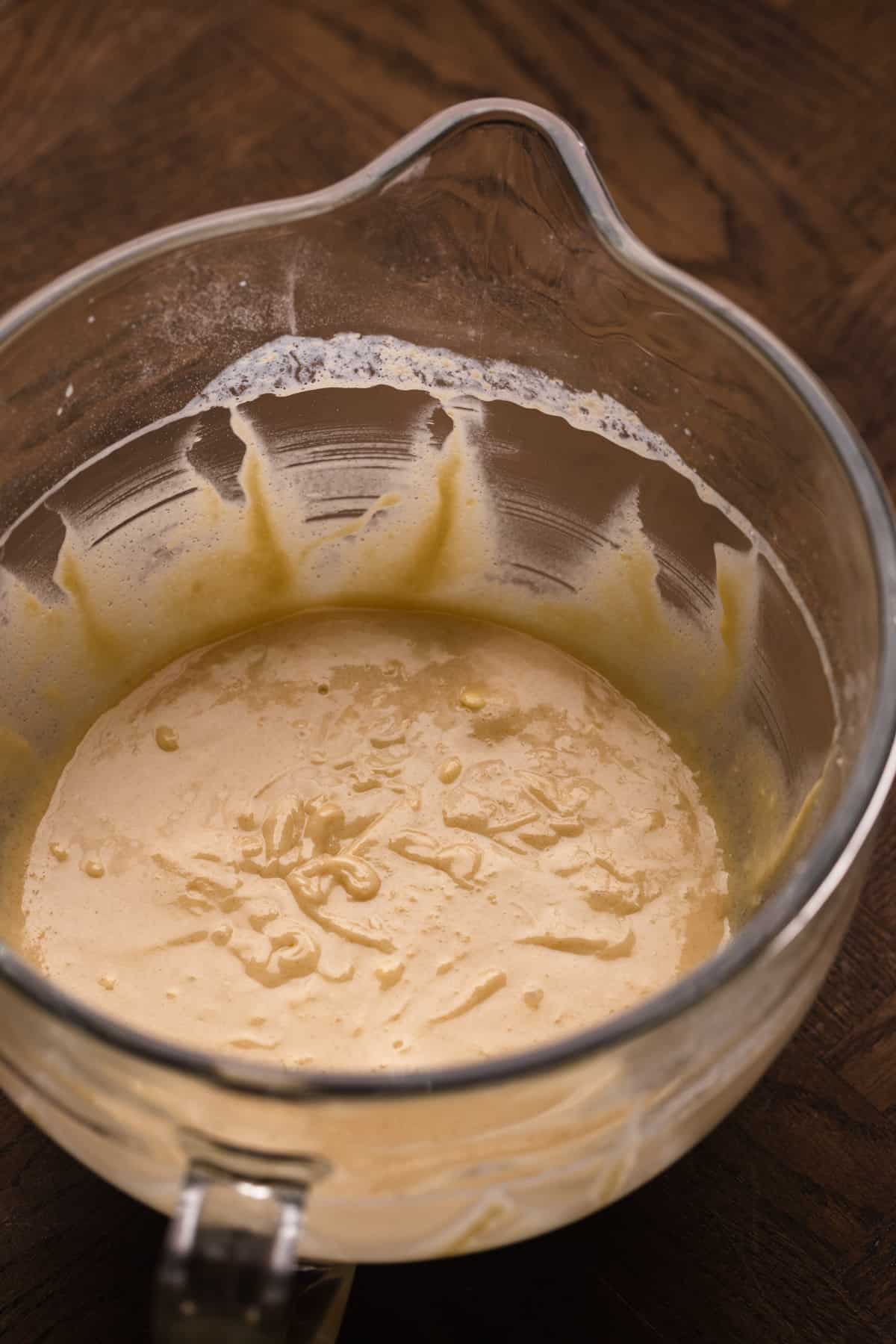
STEP 5: Divide the batter evenly between the two lined cake pans. You can weigh it to be as precise as possible, but I just use a large cookie scoop to portion the batter. After that, place the pans on the same rack in the center of the oven and bake for 25-30 minutes. The cakes are done when the center springs back after applying gentle pressure with your finger.
STEP 6: Remove the pans from the oven and place them on a wire cooling rack. Let them cool for 20 minutes and then gently turn the pans upside down onto the rack and lifting them up to release the cake.
You can start assembling the cake once the layers reach room temperature, but I like to let the layers chill in the freezer for about 20 minutes beforehand. Chilling makes the cake solidify a little so less crumbs loosen while you decorate.
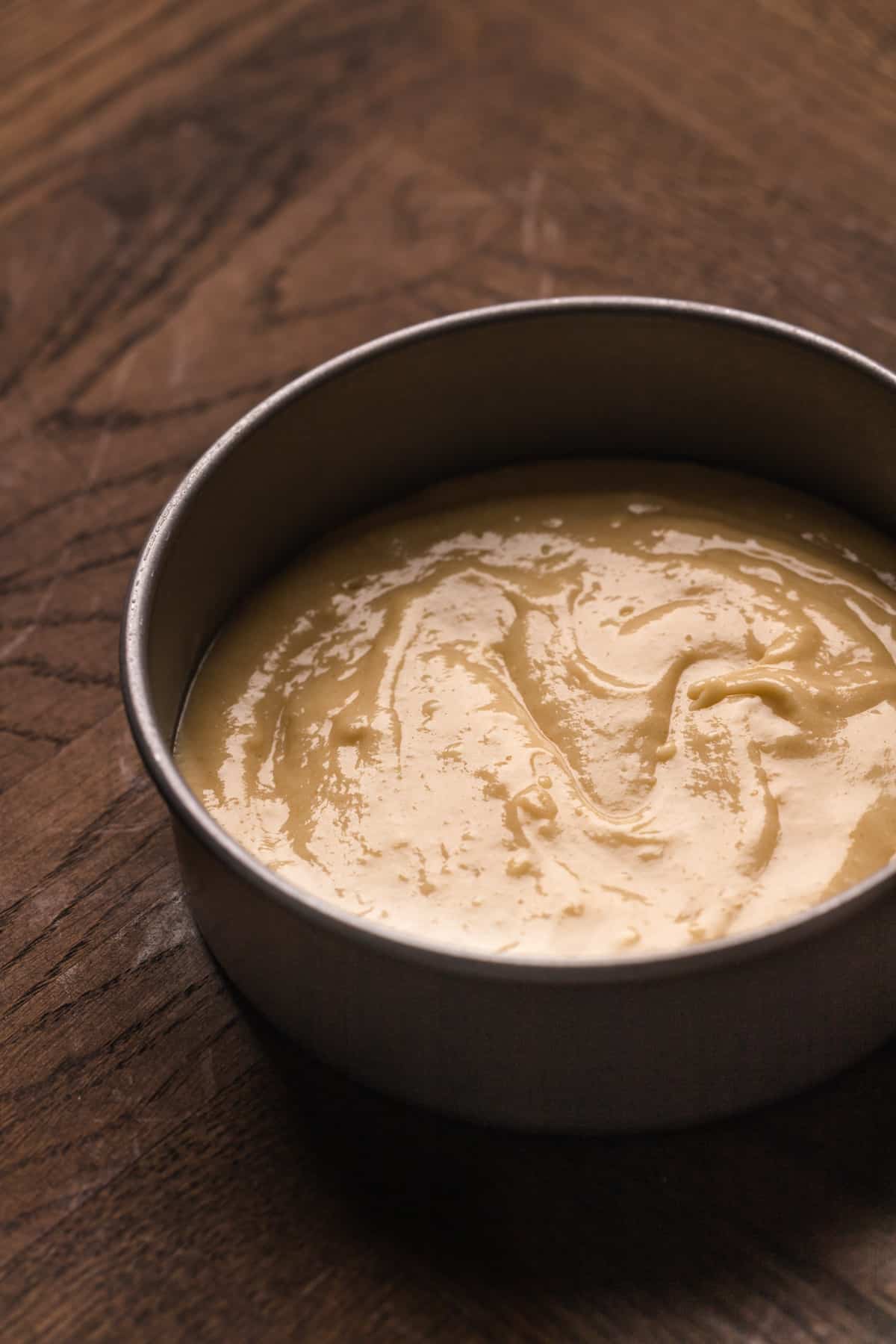
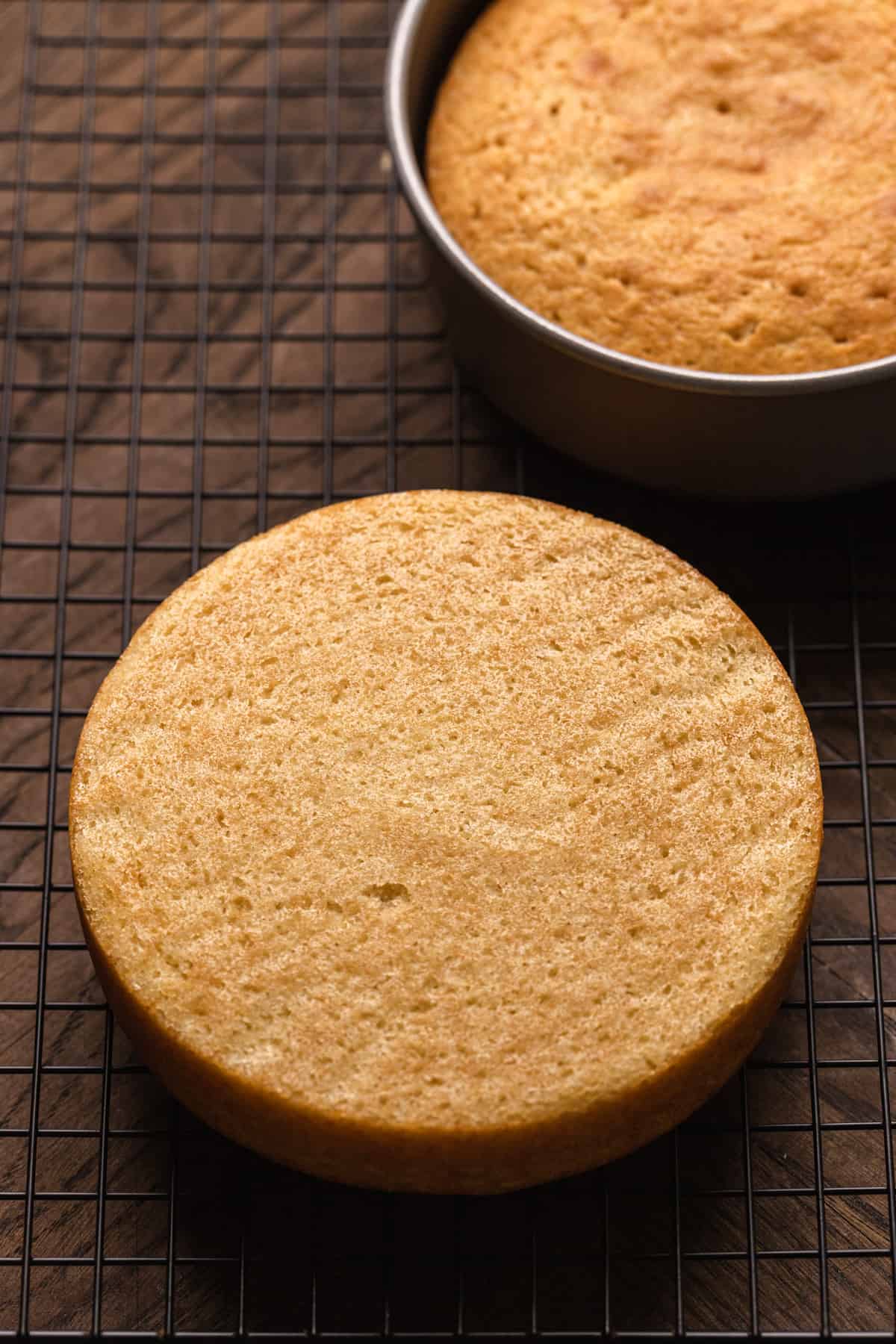
How to Make Cream Cheese Frosting
This frosting is super easy to make with softened butter, cream cheese, vanilla bean paste, and powdered sugar. For full detailed instructions with helpful tips and tricks, head to my small batch cream cheese frosting recipe.
STEP 1: Start by adding softened butter and softened cream cheese to the bowl of a stand mixer. Using the paddle attachment, mix them together on medium speed until smooth and fluffy. You can make the frosting with a hand mixer too as pictured below.

STEP 2: Next, add the powdered sugar to the creamed butter and cream cheese 1 cup at a time, mixing on low until everything is well combined. This takes about 5 minutes.
STEP 3: Pour the vanilla bean paste into the frosting and mix on medium-low speed until smooth and well mixed.

How to Frost a Cake
Frosting a cake can seem intimidating, but I promise it's easier than you think! First, assess the cake layers to see if they're even. If the tops aren't flat, use a serrated knife or cake leveler to create a flat surface to make frosting easier and prevent air bubbles from forming between the layers.
Start by adding a tablespoon of frosting to the middle of your cake stand and fan it out with a knife. This acts as glue to keep your base cake layer from moving around. Next, place a cake layer in the middle of the cake stand and spread a thick, even layer frosting on top with an offset spatula or the back of a spoon.
Next, place the second cake layer upside down on top, making sure it's straight. Press down on the top with both of your hands to remove any air bubbles that could cause bulging sides. Placing the cake upside down creates a great looking flat surface on top.
Spread a very thin layer of frosting all over the cake from top to bottom. This is called a "crumb coat" because it locks in loose crumbs, preventing them from getting into the final layer of frosting. Use an offset spatula or a bench scraper to smooth out the crumb coat. You can leave the cake like this for a semi-naked look or continue after chilling the cake in the refrigerator for 20 minutes.
Once the crumb coat has firmed up a bit, spread a thick second layer of frosting all over the cake. I ran a bench scraper around the sides and edges of the cake to smooth it out and then used a piping bag fitted with an Ateco 866 star tip to pipe a shell boarder around the top and bottom edges. You can do this, create big swirls with your offset spatula, or follow whatever decorating technique you like. Just don't forget the sprinkles!

Expert Baking Tips
- Use a kitchen scale. I recommend using a food scale for accuracy. If you don't have one, always spoon-measure your flour. Fluff up the flour first before spooning it into your measuring cup- don't pack it in!
- Use room temperature ingredients. Using room temperature eggs, butter, and buttermilk creates a fully blended, smooth batter that will bake up evenly with a uniform texture.
- Don't overmix the batter. Over mixing cake batter will result in a dense cakes with sunken centers.
- Wait until the cakes cool to frost. Wait for the layers to cool completely before frosting them. I know it's hard to resist, but the frosting will melt off if they're too warm!
Additions and Variations
Vanilla cake is a great base for so many flavors! Here are some fun ways to customize this cake.
- Add a dollop of chocolate ganache, lemon curd (like my lemon chocolate cake), strawberry cake filling or raspberry jam, strawberry mousse, or blueberry compote in the center of the cake.
- Use a different kind of frosting, like vanilla buttercream, almond buttercream, chocolate buttercream, easy Swiss meringue buttercream, or a more unique flavor like lavender or brown sugar buttercream. You could even add a little lemon juice or almond extract to the cream cheese frosting.
- Instead of rainbow sprinkles, top the cake with shaved chocolate, fresh fruit, flowers, or candles for a birthday!

Storage and Freezing
The frosted vanilla cake keeps in the refrigerator for up to 1 week. The frosting locks in moisture, keeping the cake moist for days! I recommend storing it in a cake carrier or another large airtight container, covering the cut section with leftover frosting to keep it moist.
Store the leftover frosting in an airtight container in the refrigerator for up to 1 week. When you're ready to use it, give it a quick mix to make it soft and smooth again.
Freezing
Wrap leftover cake slices in plastic wrap and place them in an airtight, freezer-safe container. The slices will keep in the freezer for up to 3 months so you can grab a slice whenever a cake craving strikes! When you're ready to enjoy, unwrap a slice, put it on a plate, and let it thaw on the counter for about 1 hour.
I don't recommend freezing the entire frosted, unsliced cake. But one of my favorite hacks is to freeze the cake layers ahead of time. This breaks up the baking and decorating processes and makes entire cake-baking process more approachable. Frosting frozen cakes is nice because less crumbs break off too!
Leftover frosting can be stored in an airtight container in the freezer for up to 3 months too. Let it thaw overnight in the refrigerator and give it a good mix to make it creamy before using.
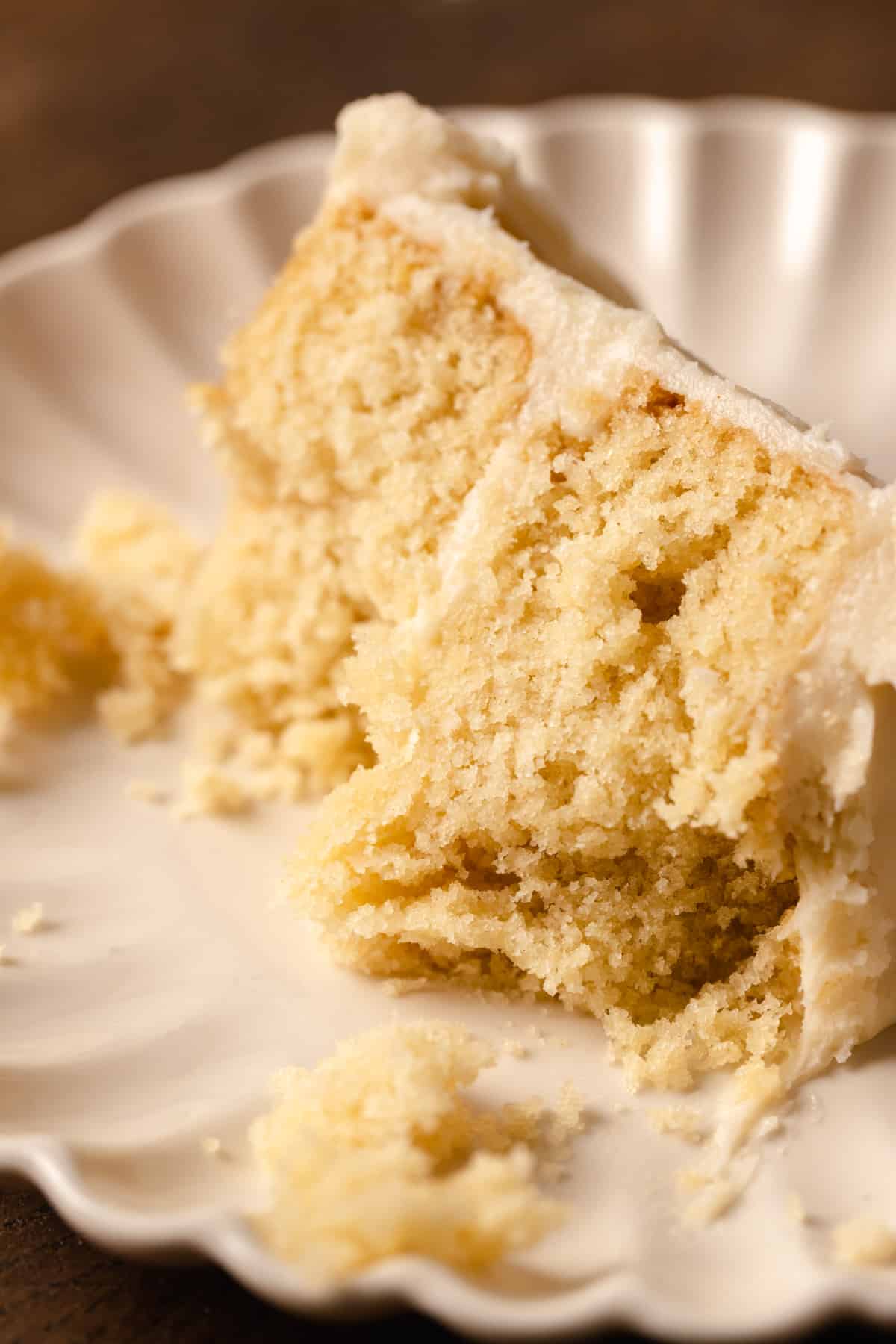
Frequently Asked Questions
You can cut the cake into 6-8 small slices or 4 big ones.
Yes! You can split the batter between 3 4-inch cake pans to make a mini layer cake. The cakes will take a little less time to bake, so keep an eye on them and start checking for doneness around the 15 minute mark.
I haven't tested it, but you could try using a 1-to-1 gluten free baking flour. Make sure the flour you use is specifically labelled "baking flour", not "all purpose flour".
If you're making the cake gluten free, make sure to vigorously whisk the batter. Yup, throw all your baking knowledge out the window! Gluten free batter needs to be whisked vigorously so it rises and gets extra fluffy. After that, let the batter sit for about 30 minutes before baking. Gluten free flour sometimes struggles to absorb moisture, so letting it sit helps thicken and moisten the batter.
More Cakes and Pies to Try
📖 Recipe
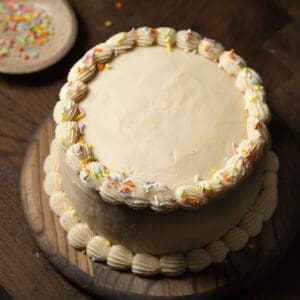
Small Vanilla Cake
Equipment
Ingredients
Vanilla Cake
- 1 ½ cup cake flour
- 1 cup granulated sugar
- 1 teaspoon baking powder
- ¼ teaspoon baking soda
- ¼ teaspoon sea salt
- ⅓ cup unsalted butter room temperature
- ⅓ cup vegetable oil
- 1 large egg room temperature
- 1 egg white room temperature
- 2 teaspoon vanilla extract
- ⅔ cup buttermilk room temperature
Cream Cheese Frosting
- ½ cup unsalted butter softened
- 8 oz cream cheese softened
- 4 cups powdered sugar
- 1 teaspoon vanilla bean paste
- ¼ teaspoon sea salt
Instructions
Vanilla Cake
- Preheat the oven to 350°F/180°C, grease 2 6-inch cake pans with non-stick baking spray, and line them with parchment paper rounds.
- Add the cake flour, sugar, baking powder, baking soda, and salt to the bowl of a stand mixer fitted with the paddle attachment. Mix on low, spinning about 5 times.1 ½ cup cake flour, 1 cup granulated sugar, 1 teaspoon baking powder, ¼ teaspoon baking soda, ¼ teaspoon sea salt
- Add the butter to the bowl and beat on low for 5 minutes until the texture looks like wet sand.⅓ cup unsalted butter
- Add the oil, egg, egg white, and vanilla extract. Mix on low until a batter forms. Then pour in the buttermilk and mix until well combined.⅓ cup vegetable oil, 1 large egg, 1 egg white, 2 teaspoon vanilla extract, ⅔ cup buttermilk
- Portion the batter evenly between the 2 cake pans. Place the pans on the center rack and bake for 25-30 minutes. The cakes are done when the center springs back after lightly pressing with your finger.
- Remove the cakes from the oven let them cool for 20 minutes on a wire cooling rack. Then, gently turn the pans upside down onto the rack and let them cool to room temperature.
Cream Cheese Frosting
- In a large bowl, beat the softened butter and cream cheese together with an electric mixer on medium-high speed until smooth and fluffy.½ cup unsalted butter, 8 oz cream cheese
- Gradually add the powdered sugar to the mixture, one cup at a time, beating well on low after each addition.4 cups powdered sugar
- Add the vanilla bean paste and salt and mix on low until well combined.1 teaspoon vanilla bean paste, ¼ teaspoon sea salt
Assembly
- Assemble the cake when the layers are completely cool. If the cakes have domed tops, level them with a cake leveler or serrated knife.
- Spread a thin crumb coat of frosting over the entire cake. Refrigerate for 20 minutes.
- Once the frosting has firmed cup, cover the cake with another layer of frosting. Pipe a boarder around the cake if desired. Decorate with sprinkles, slice, and enjoy!
Video
Notes
-
- I recommend using a food scale for accuracy. If you don't have one, fluff up the flour first before spooning it into your measuring cup.
-
- Use room temperature eggs, butter, and buttermilk for a fully blended, smooth batter that bakes up evenly.
-
- Don't overmix. Overmixing cake batter will result in a dense cakes with a sunken center.
-
- Wait for the cake layers to cool completely before frosting them. The frosting will melt off if they're too warm.
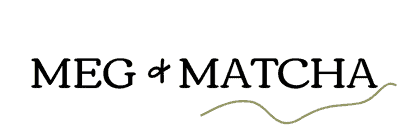

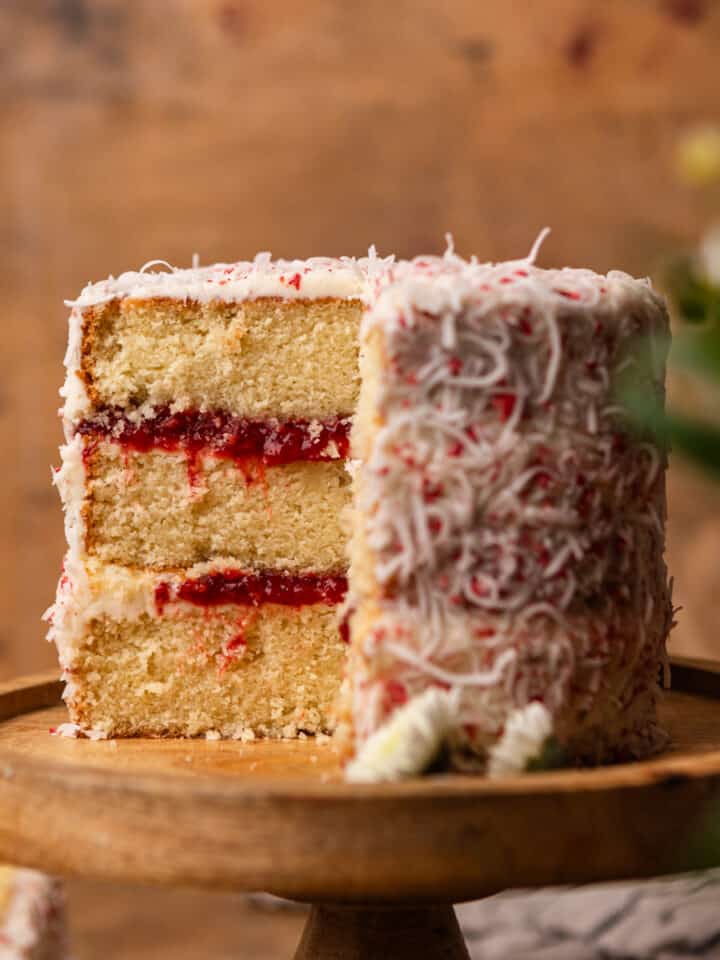

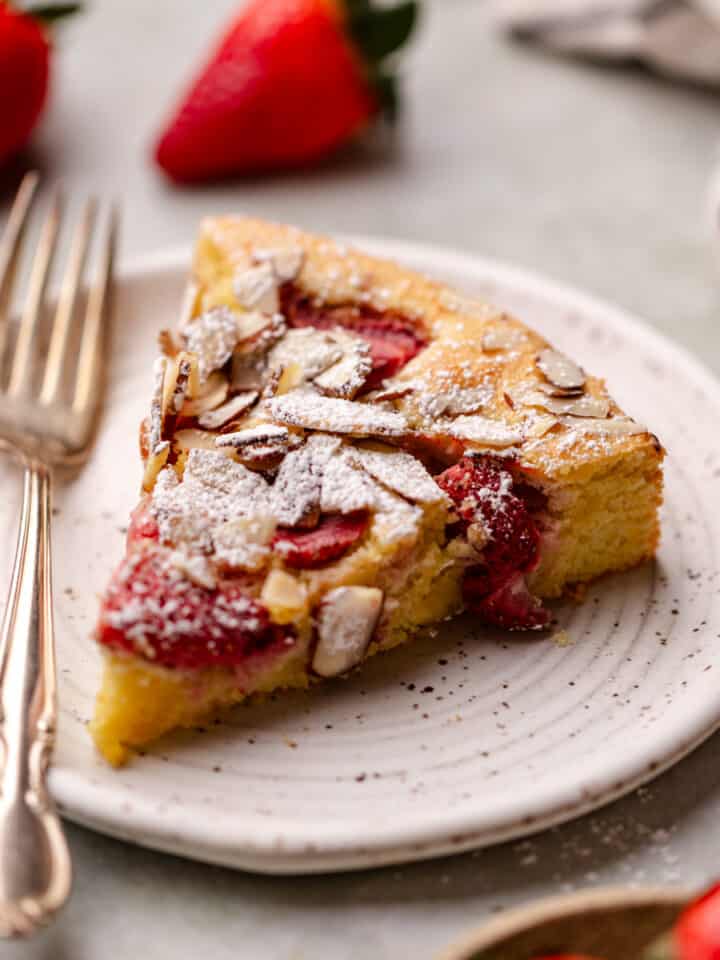




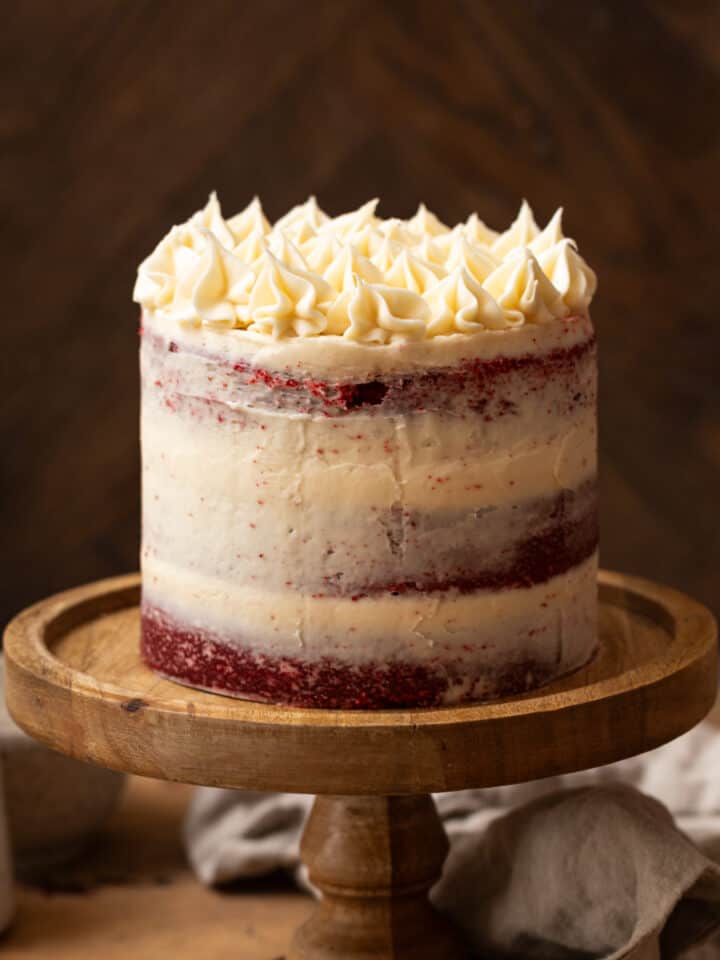
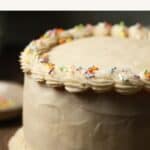
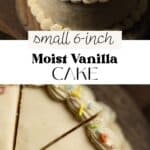
Benton Quiros
Saved as a favorite, I love your site!